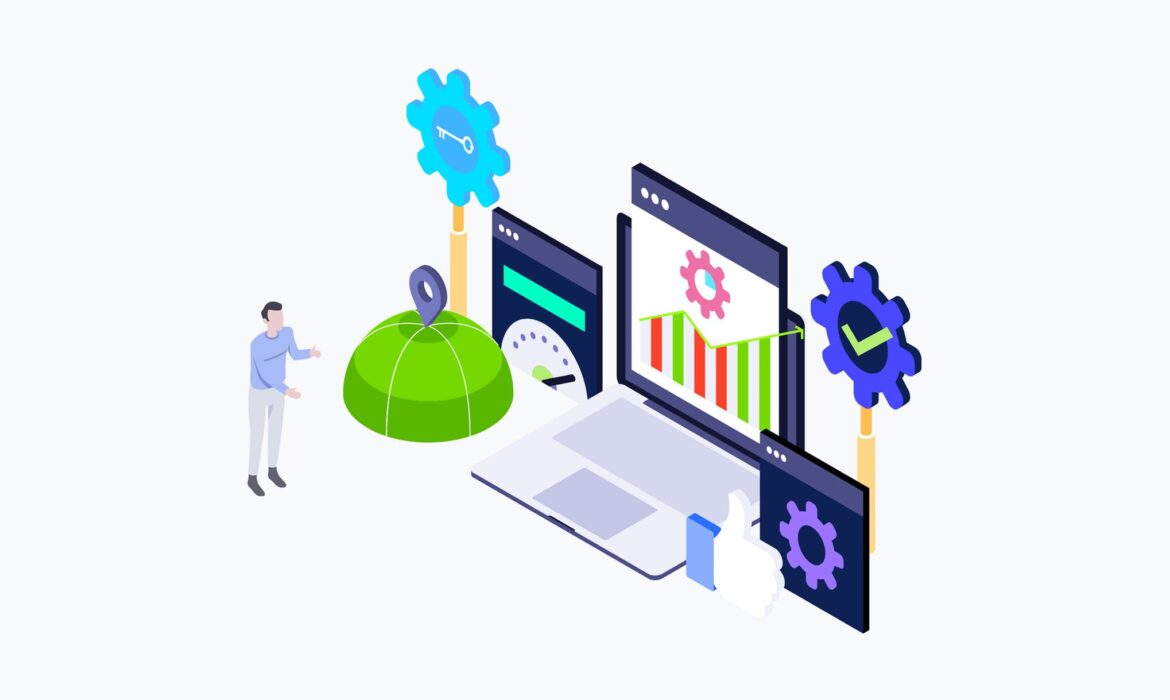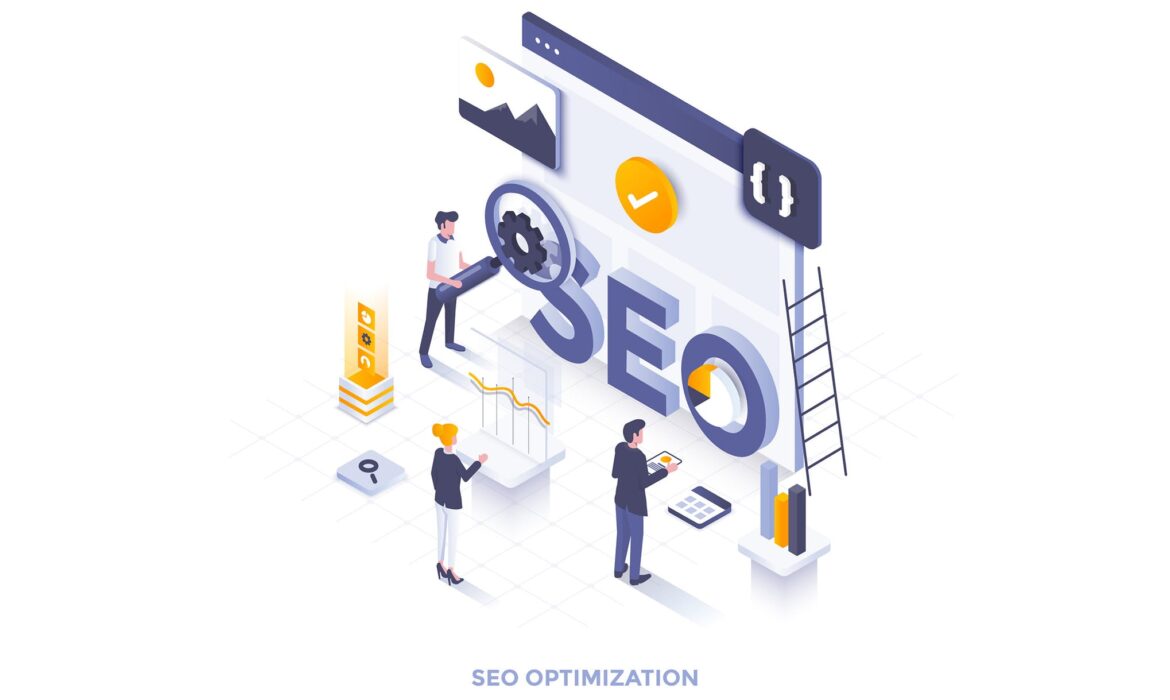
Should You Outsource Website SEO? 7 Reasons To Do It Right Now.
1. The curious case of the ever-evolving SEO
Anyone familiar with Search Engine Optimization (SEO) would know that one thing that keeps changing about this whole process is change. Google has even mentioned that they update their algorithms over 500 times per year. Considering that these SEO changes require constant time and attention as well as deliberate planning, there is a need to find the best in the industry. There is a whole industry of Internet, SEO and inbound marketers whose sole job is to test new hypotheses, keep abreast of changes and shield the company from potential penalties from search engines.
And if you happen to run a marketing group or a business, there are definitely lots of things to worry about. This is why the ever-changing and constantly evolving world of SEO and content marketing is best left to the experts.
It not only saves time, effort, frustration but also money caused by errors. There is also the angle of enhanced support which is customized according to your requirements and tailor-made for you. Think of it as a shirt that fits you fine, and you will understand what we are talking about.

2. High-quality content bolsters SEO
Content marketing is essential and it matters to SEO. However, like some say, it is not at all a replacement for SEO. It is more of a partner in crime.
Too many people rush in order to create content, but without any concrete content strategy to drive their efforts.
The one key crux of content strategy is definitely SEO.
The two are independent of each other in reality. Organic ranking involves lot of good quality content which will show up for topics and keywords that are to be targeted. But if you want the content to be found, then, it needs to be shareable, well-built and linkable to rank.
These are not mere speculations. These have been well-documented to indicate that higher volume of good content helps drive traffic and leads.
So the questions that come out of this discussion are who writes all that content or who is building the plan for what to write? How is SEO being integrated into the process?
The simplest answer to these is to hire a vendor who is an expert in managing SEO and creating content and can be trusted. Actually, it’s more work than you think it is.
3. Dedicated consistency is the key to social SEO
Social media and SEO now overlap – a phenomenon that many refer to as social SEO. Marketing business on social media is a form of social SEO.
If you have also been using social media to help boost SEO, to get the content indexed and show up more in the Search Engine Results Pages (SERPs), then you’re already ahead of the game.

So, why not consider offloading some of that responsibility and labor to an outsourced agency? You can better spend your limited time on brain-intensive strategies which would result in optimum use of your time and will pay you rich dividends through good and sound decision-making.
Working with the right partner is the key to improve strategy to another level and for them to source ongoing and consistent execution. It will not only help in labor but also in brain capacity building.
4. Doing everything yourself may not work, and may be risky and dangerous
Link building has gotten a very bad name with the hype around it in the past few years due to the string of Penguin penalties. Link earning has become the phrase that the industry has adopted.
Links don’t magically appear even when appreciating the fact that link earning is a great concept and something we should all strive for. Link earning is also a form of link building though it is less spammy and predatory.

Even without doing anything spammy and under the table, one could invite penguin penalty which would involve endless frustration and months of link cleanup.
Therefore, the need for an SEO expert becomes paramount for managing the link building process responsibly. The work is not just about spamming links out on the web, it includes monitoring the link profile, identifying risky links that might have been earned or acquired and even cleaning up any suspect links before they lead to a loss of organic traffic.
Do you have the requisite skill sets? Since most of small and medium enterprises do not have such talent and skill sets, an outsourced hand might be the key to bring a balance and can help you quickly do the needful rather than waiting for the already overburdened in-house team to do everything.
5. Available On Hire: Technical SEO Expertise
Technical aspect is seen to be one of the most underappreciated areas of SEO. It helps optimize the availability of the content to search engine crawlers, page load time, whether the architecture is built appropriately, quality of the code as well as semantic markup on the website.
Free SEO Audit tools available across the Internet can be used. While some of these tools only focus on technical SEO, others focus on the on-page, whereas still others cover both. These are actionable and informative but they can also lead to confusion for typical marketers.
Web designers are the ones who often claim that they understand SEO much more than they actually do. Development and Design are varied aspects and there is a need to differentiate between the two at any cost.
The best bet would be to hire someone who knows and specializes in SEO so that the enterprise is getting the right feedback throughout the process.
A designer may not be able to recommend some website updates because they either don’t want to mess with it or don’t know how to fix the problem.
A good technical SEO analyst will understand the difference between high impact and good to have aspects. They will help translate development language and design into simple English language in order to understand that the decisions are based on facts and not opinions.
It is time to take advantage of cross-client experience at the fraction of cost of hiring the same person. This, as you can gauge can help you save time, money and valuable efforts.
6. Analytics is the way forward
Website analytics are free and easy to deploy if Google Analytics on your web properties is used or if the budget is low. Currently, most websites have analytics tracking code live for providing data on traffic trends and content.

But Google Analytics are still hardly comprehended enough. Some of the issues are:
- Tracking the website for incorrectly implemented codes.
- If Google Analytics has been customized irresponsibly or misconfigured.
- Lack of adequate access to metrics relevant to businesses such as conversions or goals.
- Blind spots in the data combined due to deployment of GA (Georgia Code) code or oversights in coding.
Most marketers hardly have any idea about where to find the most relevant data in order to make decisions. But internet marketers have to understand these aspects. The easiest way to do that is through an outsource help such as of a SEO analyst who is more experienced with interpreting and collecting data of the website.
This helps you streamline the working of the organization and pays rich dividends by way of improved ROI for the website and better decision making process as a whole that adds to the repute of the organization.
7. Who wins the SEO race? The fastest horse
You can easily comprehend from this post that the game of SEO or the race is all about providing the adequate and much needed support, technical knowledge and expertise that the enterprise itself may not have.

These specialists or experts can help make the job much easier, free your desk of major data constraints and responsibilities and trainings that might be required for an in-house staff.
Time, money and efforts are other important aspects that such an exercise helps one save. Since time and tide wait for no one, the most opportune time to invest is when you find the organization’s website without the much needed SEO aspects. If you are not comfortable doing it yourself, then look for others who are far better experienced and can help you by offering you the best.
Our bet would be on the horse that seeks the race to the top of the SERPs. For every day you are waiting, you are losing out on precious time that you can spend in strategizing, planning and decision-making. Not to forget, you are letting your competitors rule the roost.
A competitor has the capability of generating a huge volume of content, domain age variables and content, so you need to be on your toes so that you don’t miss the bus. The fastest way to do it is definitely outsourcing SEO to a consultant or an agency who or which is cut out for such expertise, support and processes and can customize it at the earliest for you to execute promptly.

Top SEO Secrets [Revealed] – Part 1
Search Engine Optimization starts with knowing where you’re currently at. Only then can you determine where you want to be.


How Do Search Engines Determine Rankings [2020 & Beyond]
Ranking is the process of organizing results to queries typed on a search engine based on the order of relevance, from the most important to the least important.
Ranking factors have a huge role to play in search engine optimization and digital marketing strategies of a site. In order to have a technically sound domain that focuses on delivering relevant content to users, ranking can play a definite role in optimization that results in attracting the right customers to the business.
Especially in the competitive industries such as health, banking, finance, investment services and e-commerce, ranking factors play a significant role in business sustainability and they are the key to gain an edge over competition.
It is important to note that there are various ranking factors that influences whether a website appears on top or at the end. Every search engine’s ranking parameters are different and it reflects in the results which show up.
In order to gauge the relevance, search engines use a set of formula coupled with processes, that are typically termed as algorithms, to retrieve stored information in order of relevance and present those to the users in meaningful ways.
From the first search query to now, these algorithms have undergone tremendous changes and have become sharp, focused and ‘intelligent’ in terms of results, thereby improving the quality. For instance, search engine Google makes algorithm adjustments on a daily basis in terms of broad, core algorithms or minor tweaks that enhance overall customer experience. If the website has suffered after an algorithm adjustment, it is good to check it against the Search Quality Rater Guidelines or Google’s Quality Guidelines.
So why do search engines do what they do? They do so because they want to provide the most useful answers to the queries listed by the user in the most helpful formats. Search engines are themselves learning in terms of language and user experience and they have incredibly evolved from cheap tricks and tactics of language used.
Repetition of words and phrases in the website was considered a key back in the day but search engines have become smarter and do not encourage such cheap tactics anymore. Such mistakes have the potential of making the website’s rank go down in the rankings. These mistakes make for terrible user experience which leads to users being bombarded with hard-to-read texts and makes for an unforgettable and annoying experience. Search engines no longer want to be associated with cheap quality of website handling and that reflects in the rankings.
Write back your questions and comments, to know more about the upcoming SEO trends and techniques. For Corporate Training & Seminars on Digital Marketing, write to me at vikram.jethwani@gmail.com

Success Against All Odds W/ Soulaima Gourani
Soulaima Gourani is a Young Global Leader of the World Economic Forum, and the owner of tradeconductor.com and womenreignite.com
In this episode of ‘Mind, Money & Body’ Podcast, Soulaima shares her inspiring story as a global leader. Soulaima is a Danish Moroccan corporate advisor, speaker and writer based in Palo Alto, California.
Key takeaways:
– Keep working towards your goals relentlessly. No matter what comes before you, keep moving ahead and do not shy away from hard work.
– Keep learning and stay inspired. Learn from good books, videos and various other resources that are now available online quite easily.
– Adopt a helping attitude and support others too, in achieving their goals. Not everyone has access to resources and same level of privileges. If you reach a point in your life where you can help others, take this opportunity without a second thought.
To know more about Soulaima’s initiatives, visit: https://womenreignite.com
Read her book: https://bookboon.com/da/ignite-your-career-ebook
Subscribe to our Podcast to stay connected:
Google Podcasts: https://bit.ly/3dzqW3X
Spotify: https://spoti.fi/2WitRbz
Facebook: https://www.facebook.com/Marcom18.India/
Subscribe our YouTube channel: https://www.youtube.com/watch?v=1ZkFqTunqwE
Connect via Instagram: https://www.instagram.com/vikramjethwani/
She has authored several bestseller books on themes like “How to take control over your life” and “How to Design Your Future” and many others. She has worked with clients as Samsung, Roche A/S, Leo‐Pharma, NNIT, Genzyme, Aberdeen, DuPont, LEGO, McKinsey, DELL, Microsoft, Adecco, ManSoft, Alk Abello, Aon Hewitt, Citroen, Colliers, Diageo, Cisco, Ernst & Young, Volvo, FL Smidth, H. Lundbeck, IBM, TDC, SimCorp, Novo Nordisk, Novozymes, Danske Bank, News Corp and Deloitte etc.
Her geographic experience includes 35+ countries: Denmark, Norway, Sweden, USA, Finland, Greenland, Austria, Hungary, Germany, UK, France, Italy, Saudi Arabia, Israel, Russia, Mongolia, Dubai, Sri Lanka, Myanmar, India, Greece, Thailand, Egypt, Venezuela, Morocco, Turkey, China, Lebanon, Japan, Switzerland, Mexico and Bahrain.
She is a keynote speaker and an advisor to major companies on customer loyalty, strategic networking, change management, employee motivation and future of business.
Subscribe the Podcast now to receive more such insightful content about financial, mental and physical well-being.
Thank you.
Vikram Jethwani
Digital Strategist & Founder – Marcom18
www.marcom18.com
Share on facebook
Facebook
Share on linkedin
LinkedIn
Share on whatsapp
WhatsApp
Share on twitter
Twitter
Share on mix
Mix

How to Increase Your ROI Through scientific SEM?
Want to know the one thing that every successful digital marketer does first to ensure they get the biggest return on their marketing budget? It’s simple: goal-setting. This is an absolutely essential practice for any digital marketer who knows how to execute their campaigns in a productive, cost-effective way. With a few. With a few simple tips, you can be doing the same in no time! In this blog, we’ll walk you through the first steps every savvy digital marketer takes to ensure that they’re on target to hit all their marketing objectives. Get ready for revenue!
Remember: even if the channel you’re considering is all the rage right now, it might not fit your brand. Always make informed decisions that directly relate to your company. Otherwise, your message won’t be delivered to its intended audience and you’ll have wasted time, effort and money.
Know Your Digital Goals
The first step is clearly identifying which goals you want to achieve. Get specific. Do you want to increase brand awareness? Are you all about locking in leads? Do you want to establish a strong network of influencers that can help you be discovered? How about pushing engagement on social media?

Get Specific
A useful tool for narrowing down your goals to ensure they’re viable is the SMART mnemonic. It’s important to get specific to understand exactly what you’re working towards, and help you break down the process of hitting your targets. This is exactly what this mnemonic helps you to achieve.
- Does the channel reach my intended audience?
- Is the channel sustainable and affordable within my company’s marketing budget?
- Will I be able to measure the success of the channel?
- Does the channel allow me to express my brand’s intended message?
- Do the channels I’m considering work together to convey my message?

Always Remember Your Goals!
Establishing a solid vision for your business is the first step to planning your digital marketing budget. Always keep your final goals in sight when organising anything for your company. When deciding which steps to take next in your business, ask yourself how they will help you achieve the goals you outlined in Step #1. This will ensure that you stay on track and prevent you from spending your budget on anything that won’t help you achieve.
As your budget progresses and evolves, continue referring to your SMART objectives. Stay focused and remember your goals – they will always inform what your next step will be!

Magento Vs Shopify Vs BigCommerce: Which Is The Best?
In this blog, we’re going to talk about the three major e-commerce website platforms – Magento, Shopify & BigCommerce.
Probably if you’re an e-commerce business you probably fall into one of these two buckets: you’ve built your business on retail and you’re looking to now grow your business online or you are already an online business and sell all of your products or most of your products on the Internet.
Well, I’m going to talk about all the three of the main platforms that you’re probably going to want to think about using now.
This blog is intended to be a general overview of pros and cons and the major platforms that you can use. There are other ones that say that they are e-commerce. They have e-commerce capabilities, but they don’t really compare to these three, in terms of robustness, stability and scalability.
So let’s talk about the first one i.e. Shopify.
I’m going to go through the pros and cons of each of them and who probably like types of business each platform would be right for. Shopify probably is the most popular one and there’s a reason it’s the most popular.
It’s because it’s the easiest platform to start a small out of your garage side hustle business. It is super easy to start. It’s just a little bit harder than maybe opening a Gmail account another benefit or a pro is that has some of the most beautiful themes out there meaning you can make your website look, fantastic just by buying a theme off of a Shopify designer or developer and there’s thousands probably millions of them to choose from so you can really make your website your own individual website.
Let’s dive-in into some other benefits of Shopify. It comes with a built-in blog so you can get your blog right away. That’s great for SEO. That’s another benefit of Shopify.
It’s relatively low cost. Although they do take a percentage to assess any money coming in any time somebody buys your product, they’ll take a percentage of that. So merchant fees is there, but generally super easy to use.
It’s what I would recommend to anybody starting a new business from scratch without a lot
of funding; with zero technical knowledge – Shopify is the place to go and there’s even some big businesses built on Shopify. MGMT, for instance, is a watch company. They currently use Shopify.
Well, there are a few downsides too. The first one is that as you start to grow you start to have limitations with regards to the customization of the platform. So there’s limitations on the number of products that you can list.
There’s limitations on the customization between the apps or the plugins that you’re using to operate your business. Things like cart abandonment, retargeting, website pop-ups and rewards programs, you know website credit things like that that becomes major limitation
as you start to grow your business into the $500-600K in revenue and beyond.
However, Shopify does have an enterprise-level version called Shopify Plus that comes in to help larger businesses customize their customers web experience their user experience because they have an API that you can tap into there’s just more customization that you can
use but it’s also more expensive starts at about $2,000 or 2,500 a month just to use Shopify plus.
One more downside of Shopify is that you have to buy several plugins to build your e-commerce engine. Some plug-ins come free of cost. But as you want to grow your machine and really start to integrate the full-scale ecommerce funnel, you have to buy plugins from their app Marketplace and that can get pretty expensive.
Plugins range anywhere from twenty bucks all the way up to a hundred plus and a lot of times these are monthly membership. So you can be paying you can be shelling out a lot of money just for plug-ins.

It’s now I want to talk about the next platform is BigCommerce!
BigCommerce is another relatively popular platform and it’s kind of the middle between Shopify and the third one.
I’m going to talk about Magento and the reason it’s sort of in the middle and I don’t mean middle and ranking. I mean middle in its features. It doesn’t have quite as beautiful themes as Shopify.
If you use a Bigcommerce theme, it’s like less likely to look like a lot of other websites out there. So you’re going to need somebody with coding and designing knowledge to create custom site in order to really set yourself apart.
But BigCommerce does come out of the box with more capabilities than Shopify without buying the plugins that you have to buy in Shopify. So BigCommerce just comes out of the box with a ton of capabilities that are ready to build your e-commerce engine.
So as you’re scaling up past five hundred thousand dollars, you really want a lot of customization and you would want to list more products — BigCommerce is probably going to be a little bit better for you.
Then the third one is super popular. I believe it is used by more companies than both of the first two combined. There’s a reason for that and that it’s highly flexible.
You can literally build whatever you want out of Magento. So, a lot of technical teams and developers love Magento because there’s not a lot of limitation but the limitations that the first two don’t have.
First off, the cost. The cost to use Magento is more expensive $500-700 a month is probably the average range. The other limitation to Magento is that it doesn’t have built-in hosting. So, you have to use a third party hosting provider to just build your website whereas Shopify, BigCommerce come with built-in hosting services. They have built-in hosting into the membership.
So if you’re just starting out Shopify is a no-brainer but if you have a budget and you have a development team, and you’re ready to grow fast BigCommerce is probably going to be your go to framework and it will also allow you to scale up pretty fast
Magento! It’s probably better if you have a technical team either on staff or an agency that is ready to do some crazy customizations right away. You want to grow fast or you already have a retail built business that you want to automatically integrate all of your functionalities
and all of your products into Magento immediately with super custom features – Magento is probably the better fit for you.
Although BigCommerce really does compete with them, you know on a lot of these features
and things so that’s just a super general overview of the three most popular platforms.
Let me quickly mention a few other ones out there just so you know, they are out there. WordPress, for instance, has platform called WooCommerce. I didn’t really mention that one because it has a lot of glitches and it has a lot of shortcomings.
It doesn’t work quite as well and it’s harder to scale another. I’m sure there’s plenty of you out there that are going to argue and say it’s all it’s out of the box and all it’s easy to use. There’s just some small things in security, some small glitches that you just have to understand
and know in order to make WooCommerce work for you.
Let me know your thoughts and if you require any assistance with your e-commerce business plans, do not hesitate to contact us via the below contact form.
Have a great day!